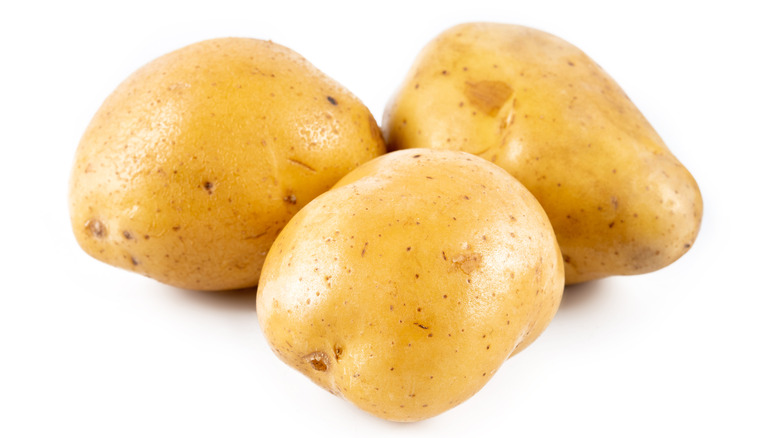Alton Brown's Technique Yields The Best Baked Potato Texture
Fighting for the spotlight with bread, pasta, and rice, potatoes are such a versatile ingredient that's nearly impossible to get tired of. From smashed potatoes, mashed potatoes, boiled potatoes, and roasted, to tater tots, french fries, and even gratin, the techniques are never-ending and continuing to grow. And speaking of techniques, there's one that doesn't require any additional ingredients or extra attention: baked potatoes. As a perfect starchy side to grilled meat, these hearty spuds can be wrapped in foil, thrown into the oven, and left alone for up to an hour before it's ready to eat. With the low maintenance and high flavor, it's a no-brainer potat-er.
Food Network's Alton Brown is always up for sharing his newest food science secrets, helping home cooks and professional chefs maneuver around the kitchen comfortably. Whether he's spilling the tea on how to amp up the flavor of cooked rice or showing us how to get that crispy edge on a pan of baked brownies, the "Good Eats" host is constantly challenging his viewers to stay curious and expand their culinary knowledge. In this case, Brown has created yet another hack on how to get the best-baked potatoes out there, without the aluminum foil. While this may come as a shock due to foil's ability to cook the potatoes quickly while retaining moisture, let's trust the chef on this one.
Oil, salt, and a fork
Brown ditches the foil in his baked potatoes and relies solely on oil, salt, and one special technique: pricking. The cooking tip we've all been told about baking potatoes in foil may not be so great after all, as long as you prick the spud with a fork to release steam, and season the skin so it infuses within. Brown's Good Eats video on Food Network shows how to do it best.
Brown states to preheat the oven to 350 degrees Fahrenheit and prick the potatoes with a fork all over. Next, he coats each potato in oil. "What this is going to do is give us a crunchy skin, but also because the oil gets much hotter than the water inside the potato, it's going to regulate the moisture in there and will actually help give us that texture that we want," says Brown.
After that, season the potatoes with salt and put them straight into the oven, directly on the rack — no baking sheet required. The average russet potato will be done in approximately an hour, but to tell when it's ready, Brown states to give it a "squeeze."
If the skin feels crunchy but the inside feels soft, it's ready. "Unless you like limp, soggy, gummy baked potatoes, please stay away from the foil," states Brown. In fact, according to Today, if you want your potatoes to taste baked, wrapping them in foil actually gives them a boiled texture and flavor.

